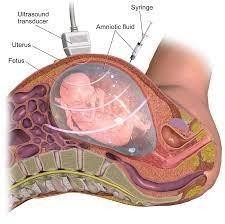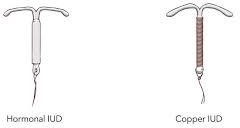A nurse is reinforcing teaching about an amniocentesis with a client who is at 34 weeks of gestation. Which of the following instructions should the nurse include in the teaching?
"You should anticipate a small amount of leakage of fluid following the procedure."
"You should take milk of magnesia the night prior to the procedure."
"You should report uterine contractions following the procedure to your provider."
"You will have blood work drawn before the procedure."
The Correct Answer is C
A) Incorrect- Leakage of fluid is possible but not a primary focus of post-procedure instructions.
B) Incorrect- Milk of magnesia is not relevant to an amniocentesis procedure.
C) Correct - Reporting uterine contractions after the procedure is important as it could indicate a potential complication, such as preterm labor.
D) Incorrect- Blood work drawn before the procedure is not typically part of the amniocentesis process.

Nursing Test Bank
Naxlex Comprehensive Predictor Exams
Related Questions
Correct Answer is A
Explanation
A) Correct- Intrauterine devices (IUDs) have one of the lowest failure rates among contraceptive methods. They are highly effective at preventing pregnancy.
B) Incorrect- Diaphragms have a higher failure rate compared to IUDs.
C) Incorrect- Oral contraceptives have a failure rate slightly higher than IUDs due to the potential for missed doses.
D) Incorrect- Contraceptive sponges have a higher failure rate compared to IUDs.

Correct Answer is A
Explanation
A) Correct - Yogurt is a good source of calcium and is a suitable recommendation for a client with low calcium levels during pregnancy.
B) Incorrect- Avocados contain healthy fats and other nutrients, but they are not a particularly high source of calcium.
C) Incorrect- Peanut butter is a source of protein and healthy fats but does not provide a significant amount of calcium.
D) Incorrect- Long-grain rice is a carbohydrate source but does not contribute much to calcium intake.
Whether you are a student looking to ace your exams or a practicing nurse seeking to enhance your expertise , our nursing education contents will empower you with the confidence and competence to make a difference in the lives of patients and become a respected leader in the healthcare field.
Visit Naxlex, invest in your future and unlock endless possibilities with our unparalleled nursing education contents today
Report Wrong Answer on the Current Question
Do you disagree with the answer? If yes, what is your expected answer? Explain.
Kindly be descriptive with the issue you are facing.
